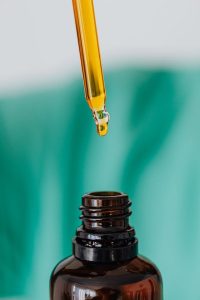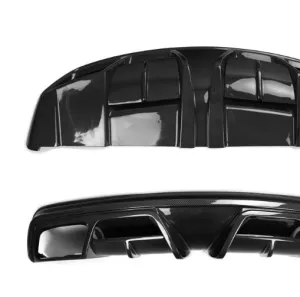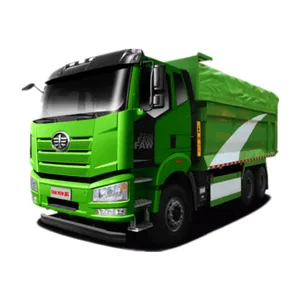Heat transfer oil is the former name of “heat carrier oil” in GB/T 4016-1983 “Petroleum Product Terminology”. The English name is Heat transfer oil. It is a type of special oil with good thermal stability used for indirect heat transfer. Taste. Due to its characteristics of uniform heating, accurate temperature control, the ability to generate high temperatures under low vapor pressure , good heat transfer effect, energy saving, and convenient transportation and operation, it has been widely used in various occasions in recent years, and its use and dosage are becoming more and more popular. Come more and more.

main feature #
The English name of thermal conductive oil is Thermal conductive oil.
Thermal transfer oil has the properties of resistance to thermal cracking and chemical oxidation , good heat transfer efficiency , fast heat dissipation, and good thermal stability . As an industrial oil heat transfer medium, thermal oil has the following characteristics: under almost normal pressure conditions, high operating temperatures can be obtained . That is to say, it can greatly reduce the operating pressure and safety requirements of the high-temperature heating system , and improve the reliability of the system and equipment; it can meet the process requirements of different temperature heating and cooling in a wider temperature range, or use the same type in the same system. Thermal oil achieves the process requirements of high-temperature heating and low-temperature cooling at the same time . That is, the complexity of the system and operation can be reduced; water treatment systems and equipment are omitted, the thermal efficiency of the system is improved , and the maintenance workload of equipment and pipelines is reduced. That is to say, the initial investment and operating costs of the heating system can be reduced; in the case of system leakage caused by accidents , combustion may occur when the heat transfer oil meets an open flame . This is a problem of the heat transfer oil system compared with the water vapor system. However, under the condition that no leakage occurs, because the thermal oil system works under low pressure conditions, its operational safety is higher than that of water and steam systems. Compared with molten salt , another type of high-temperature heat transfer medium , heat transfer oil has absolute advantages over heat transfer oil in terms of price and service life when the operating temperature is above 400°C, but in other aspects it is at a disadvantage. The obvious disadvantages, especially in terms of the convenience of system operation, are that the chemical properties are relatively stable and are not as easy to catch fire and burn as light oil . From a usage and safety perspective, its main features are
1. Within the allowable temperature range, it has good thermal stability, less coking and long service life.
2. Within the allowable temperature range, the thermal conductivity, flow performance and pumpability are good.
3. Low toxicity and odorless, does not corrode equipment, and has little impact on the environment .
4. The freezing point is lower, the boiling point is higher, and the content of low-boiling point components is small. Within the allowable temperature range, the vapor pressure is not high and the evaporation loss is small.
5. When the temperature is higher than 70°C, it will be strongly oxidized when in contact with air. The heated working system needs to be sealed, and it is only allowed to be in contact with air at temperatures below 70°C.
6. The volume expands significantly after being heated, and the expansion rate is much greater than that of water. When the temperature rises by 100°C, the volume expansion rate can reach 8% to 10%.
7. When overheated, cracking or condensation will occur, causing coking or carbon deposition in containers and pipes .
8. When water or low boiling point components are mixed in, the vapor pressure will increase significantly after heating.
9. The flash point, ignition point and auto-ignition point are all high, and it will not catch fire under the allowable temperature and sealed state.
10. Based on the area where users mostly live and the equipment operating environment, it is recommended to select heat transfer oil with appropriate low-temperature performance .
Main performance #
Thermal stability is the most important performance of heat transfer fluid . The thermal stability is different, and the degree of thermal cracking and polymerization during use is also different. Thermal cracking produces small-molecule low-boiling substances , which can easily cause air lock in the system and cause cavitation in the pump . It also causes high evaporation loss of oil and environmental pollution; thermal polymerization produces large-molecule high-boiling substances, which gradually deposit on the The carbon deposits formed on the surfaces of heaters and pipes will affect the heat transfer efficiency and temperature control accuracy of the system. LQ series heat transfer fluid selects base oil and additives with excellent thermal stability, so the product has excellent thermal stability.
Oxidation stability is another important performance of heat transfer fluids. If the open system or expansion tank is not closed with nitrogen, oxidation reaction will occur at the interface between oil and air. Generally speaking, when the temperature is higher than 60°C, the oil will oxidize when it comes into contact with air. The oxidation products gradually form colloid and sediment , which adhere to the surface of the heater and pipes to produce carbon deposits. At the same time, the acidic substances produced by the oxidation reaction will corrode the equipment and cause leakage. LQ series heat transfer fluids are selected from base oils with excellent antioxidant properties and high-temperature antioxidant and anti-scaling additives, which can inhibit the speed of oxidized sludge and the tendency of deposition and scaling, so that the system maintains good heat transfer effects.
Low volatility heat transfer fluids use the initial boiling point to express their volatility. If the initial boiling point of the heat transfer fluid used in an open heating system is lower than the operating temperature, it will easily cause cavitation in the pump, air blockage in the operating system, and excessive evaporation loss. The high initial boiling point of LQ series heat transfer fluid enables it to have very low vapor pressure and evaporation loss, which can ensure the smooth operation of the system.
Better safety The flash point and autoignition point of heat transfer fluids are used to indicate their safety. The flash point is used to indicate the safety performance of the heat carrier in a closed circulation system , while the autoignition point indicates the tendency of the heat transfer fluid to spontaneously ignite in the air when it leaks under high temperature conditions. LQ series heat transfer fluid has a high flash point and auto-ignition point, which can ensure the safety of system operation.
Heat transfer performance LQ series heat transfer fluid not only has high thermal stability, but also has excellent heat transfer performance. Appropriate viscosity can provide higher cycle efficiency; higher specific heat and thermal conductivity can effectively transfer or absorb heat, improving fuel economy and operating efficiency .
application: #
When the open heating system LQ series heat transfer fluid is used in a heat transfer system where the expansion tank is not sealed with nitrogen, the oil temperature in the expansion tank should be kept below 60°C, and the maximum oil temperature should not exceed 180°C.
When the closed heating system LQ series heat transfer fluid is used in a nitrogen-enclosed heat transfer system, it has a longer service life due to the isolation of air.
The maximum operating temperature refers to the temperature corresponding to a product with a deterioration rate of no more than 10% as measured by a thermal stability test, that is, the maximum average temperature of the main fluid measured at the heater outlet. In actual use, the average temperature of the main fluid measured at the heater outlet should be at least 20°C lower than its maximum operating temperature. After evaluation, the maximum service temperature of L-QB heat transfer fluid is 300℃, the maximum service temperature of L-QC heat transfer fluid is 320℃, and the maximum service temperature of L-QD heat transfer fluid is 350℃.
Precautions #
China’s thermal oil products comply with the GB 23971-2009 “thermal oil” standard. Users should pay attention to the following issues before purchasing:
Before selecting thermal oil, you should first determine the appropriate heating process , and it is best to entrust a professional department to do the system design . If the system has coked and needs to select oil again, the cause of the coking should be carefully identified, problems in system design, component settings, and operation management should be corrected, and the system should be carefully cleaned.
(1) The authenticity of the maximum use temperature of the product was determined by the thermal stability test method of the Institute of Stone Science and Technology , that is, after testing at the maximum use temperature, the appearance is transparent, without suspended matter and sedimentation, and the total change rate is not greater than 10%. Corresponding temperature. Analyze the authenticity of product instructions by comparing them with new standards . In particular, you need to understand how the specified maximum operating temperature is determined and whether there is a test report from an authoritative organization. According to the international standard classification, the maximum operating temperature of mineral heat transfer oil does not exceed 320°C, and the maximum operating temperature of most of this oil is 300°C.
(2) Examine the evaporability and safety of the product. The flash point meets the standard index requirements. The initial boiling point is not lower than its maximum use temperature, the distillation range is relatively narrow, and the ignition point is relatively high.
(3) Examine the refining depth of the product. The product will appear as a light yellow transparent liquid with good storage stability and will not discolor or precipitate after exposure to light. The carbon residue shall not be greater than 0.1%, and the sulfur content shall not be greater than 0.2%.
(4) Examine the low-temperature fluidity of the product and select the appropriate low-temperature performance based on the ambient temperature of the user’s area and equipment . The pour point of QB and QC is not higher than -9℃, and the low temperature kinematic viscosity (0℃ or lower temperature) is relatively low.
(5) Examine the heat transfer performance of the product with lower viscosity, larger density, higher specific heat capacity and thermal conductivity .
(6) Choose products produced by regular manufacturers. If conditions permit, we can conduct an on-site inspection of the improvement of its production equipment and testing methods.
Application scope #
Industrial fields: Application industry and equipment Rubber and plastic industry: hot pressing, calendering, extrusion, vulcanization, artificial leather processing, film processing.
Fine chemicals : synthesis of pharmaceuticals, pesticide intermediates , antioxidants , surfactants , spices, etc.
Oil chemical industry : fatty acid distillation, oil decomposition, distillation, concentration, nitrification.
Chemical fiber industry: polymerization reaction , melt spinning, thermosetting, fiber finishing.
Paper industry : hot melt machine, corrugated plate processing machine, dryer .
Wood processing : composite board pressing, drying machine.
Electrical processing: wire and cable manufacturing.
Energy industry : waste heat recovery, solar energy utilization, reactor heat extraction.
Food industry : grain drying, food baking.
Air conditioning industry: home heating chemical industry.
Petrochemical industry : polymerization, decomposition, distillation, concentration, evaporation, melting equipment, etc.
Building materials industry : asphalt melting, thermal insulation, gypsum board drying.
Textile printing and dyeing industry: hot melt dyeing, heat setting, drying equipment.
Classification #
According to the composition and manufacturing industrial process, thermal oil can be divided into synthetic thermal oil and mineral thermal oil .
1. There are mainly the following types of thermal oil: #
1) Alkylbenzene type (benzene ring type) heat transfer oil
This type of heat transfer oil is a compound with an alkane branch attached to the benzene ring. It is a product of the combination of short-chain branched alkyl groups (including methyl, ethyl , isopropyl ) and benzene rings. Its boiling point is 170~180℃, and its freezing point is below -80℃, so it can be used as antifreeze . The characteristic of this type of product is that it is not prone to precipitation within the applicable range, and compounds with isopropyl chains attached are especially good.
2) Alkylnaphthalene type heat transfer oil The structure of this type of heat transfer oil is a compound with an alkane branch connected to a benzene ring. The side chains attached to it generally include methyl, dimethyl, isopropyl, etc. The type and quantity of the attached side chains determine the properties of the compound. Alkyl naphthalenes with a single side chain connected to a methyl group are used in gas phase heating systems in the range of 240 to 280°C .
3) Alkyldiphenyl heat transfer oil This type of heat transfer oil is a compound with an alkyl branch connected to the biphenyl ring. It is composed of short-chain alkyl groups (ethyl, isopropyl) and biphenyl rings. The type and number of alkyl groups determine its properties. The greater the number of alkyl groups, the worse its thermal stability . Among such products, the thermal oil synthesized from the meta and para isomers (isomers ) of isopropyl and biphenyl has the best quality, with a boiling point >330°C and good thermal stability. Ideal product for use within the range of 300~340℃ .
4) Low-melting mixture of biphenyl and diphenyl ether heat transfer oil. This type of heat transfer oil is a low-melting mixture of biphenyl and diphenyl ether, consisting of 26.5% biphenyl and 73.5% diphenyl ether. The melting point is 12°C. The earliest synthetic aromatic heat transfer oil used in the world is Dowtherm, which is characterized by good thermal stability and high operating temperature (400°C). This type of product has the best heat resistance among organic heat carriers because the benzene ring is not connected to an alkyl side chain . This low-melting mixture with a freezing point (12.3°C) is more economical to use at normal temperatures and with a boiling temperature within the range of 256~258°C. This is due to the higher melting points of both substances (<71°C for biphenyl and <28°C for diphenyl ether). During the evaporation process of the vapor formed by this low-melting mixture, no concentration of any component occurs, and the properties of the liquid remain unchanged. Due to the combination of ether substances in diphenyl ether, phenolic substances will be produced when used for a long time at high temperatures (350°C) . This substance has low corrosiveness and has a certain corrosive effect on carbon steel and other materials when combined with moisture .
5) Alkyl diphenyl ether type heat transfer oil [1]It is an ether group link between two benzene rings, and is a mixture of isomers with two methyl groups on each benzene ring. This type of mixed heat transfer oil has low kinematic viscosity at low temperatures and good fluidity, and is suitable for use in cold northern regions. , the recommended maximum operating temperature does not exceed 330°C, the freezing point is -54°C, and the service life is better than mineral oil and alkylbenzene type heat transfer oil. The most common one at home and abroad is xylene ether type heat transfer oil, and there are also domestic manufacturers producing this type. High temperature thermal oil .
2 Mineral thermal oil #
Mineral heat transfer oil is a product of a certain distillation range in the petroleum refining process , and its main components vary with the composition of the base oil . Generally a mixture of long chain alkanes and cycloalkanes .
Hidden dangers and protection #
1. Potential dangers of various properties during the use of thermal oil #
Thermal stability Thermal transfer oil is prone to thermal cracking reactions due to local overheating of the heating system during use, forming oligomers that are volatile and have a lower flash point. Polymerization occurs between oligomers to form infusible and insoluble polymers. , not only hinders the flow of oil and reduces the heat conduction efficiency, but also causes the possibility of local overheating, deformation and explosion of the pipeline.
Oxidation stability When filling the heat transfer oil and the air and heat carrier system dissolved in it, the residual air will undergo an oxidation reaction when heated , generating organic acids and colloids that adhere to the oil pipeline , which not only affects the service life of the heat transfer medium, but also blocks the pipe. At the same time, it is easy to cause acid corrosion of the pipeline and increase the risk of system leakage.
2. Protection of thermal oil during use #
1. Avoid oxidation of heat transfer oil. Since heat transfer oil is prone to oxidation reactions when the heat transfer medium operates at high temperatures, causing deterioration and deterioration of the heat transfer oil, the high temperature expansion tank is usually protected by nitrogen filling to ensure the sealing of the heat transfer system. , avoid contact between thermal oil and air, and extend the service life of thermal oil.
2. Avoid coking of heat transfer oil. When the operating temperature of heat transfer oil exceeds the maximum operating temperature, coking will occur on the wall of the oil conduction pipe. As the coking layer thickens, the high temperature of the wall of the oil conduction pipe will promote adhesion and coking, which will continue to occur. The temperature of the thickened pipe wall further increases. As the pipe wall continues to thicken, the heat transfer performance deteriorates, and a pipe burst accident may occur at any time. Therefore, it is strictly controlled that the temperature of the heat transfer oil at the outlet of the heat carrier must not exceed the maximum operating temperature, and the maximum film temperature of the heat carrier should be less than the allowable oil film temperature.
3. Regularly check for leakage points and strengthen on-site monitoring to ensure that the heat carrier system is intact and leak-proof. Regularly check for corrosion and leakage of equipment, and promptly repair leaks if they are found. Therefore, the heat carrier system must be designed rationally, and the wall thickness and pressure strength of the equipment must be regularly tested during use, and pressure gauges , safety valves , and vent pipes must be installed on the equipment and pipelines .
4. Prevent water and other impurities from being mixed into the heat carrier. As the heat carrier heats up, the water dissolved in it will quickly vaporize, and the pressure in the heat transfer tube will rise sharply, resulting in an uncontrollable degree and causing an accident. Therefore, the heat transfer oil should be slowly heated before being put into use to remove water and other light impurities in the heat transfer oil.
5. Regularly test the indicators of heat transfer oil. Regularly measure and analyze the physical and chemical indicators such as residual carbon, acid value , viscosity, flash point, melting point, etc. of the heat carrier to grasp its quality changes in a timely manner and analyze the reasons for the changes. When the acid value exceeds 0.5mg KOH /g, the viscosity change reaches 15%, the flash point change reaches 20%, and the residual carbon ( mass fraction ) reaches 1.5%, it is proved that the performance of the heat transfer oil has changed. New heat carriers should be replenished regularly to keep the residual carbon content in the system basically stable.
3. Scrap index of mineral thermal oil #
The scrapping of mineral heat transfer fluid has the following four indicators:
1. If the viscosity change is greater than ±20%, attention should be paid;
2. If the flash point change is greater than ±15%, attention should be paid;
3. If the acid value is greater than 1.5 mgKOH/g, attention should be paid;
4. When the residual carbon reaches 1.5%, attention should be paid.
When testing the running heat transfer fluid, it was found that the viscosity changes irregularly due to the joint influence of decomposition and polymerization; the acid value gradually increases in the early stages of oxidation and then decreases; the flash point is an important indicator of the safety of oil operation. Indicator; carbon residue has been on an upward trend , starting slowly, and then the numerical growth accelerated significantly.
In short, the above indicators cannot be viewed in isolation, but must be comprehensively analyzed and judged.

 April 1, 2024
April 1, 2024 










